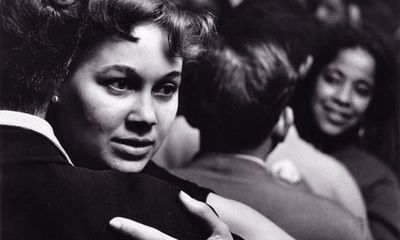Around the world in one issue
By Thea Lenarduzzi
Readers of this week’s issue of the TLS could be forgiven for thinking, at first glance, that we had forsaken the world in favour of the familiarity of our London home – it is, after all, the city of our birth, 110 years ago. Now, Norma Clarke guides us through the third and final volume of Jerry White’s history of the capital (“bigger, stranger, less graspable than we think”), before entrusting our care to Richard Davenport-Hines in his review of Night’s Out: Life in cosmopolitan London.
Soho in the early 1900s: gone the “Chaos of Dirty Rotten Sheds, always Tumbling or takeing fire, winding Crooked passages . . . Lakes of Mud and Rills of Stinking Mire”, described by Nicholas Hawksmoor in 1715, to be replaced by culinary extravagances, knock-out (and knock-off) sartorial experiments and “racy” tourism. Welcome to the jazz age! Of sorts . . . .
“Bright lights, big city, went to my TLS’s head”, you may say, but turn the pages and you will encounter the architecture of modern Russia, where, says Clementine Cecil, “a fondness for old stones has always been the preserve of the dissident voice”.
The Ligurian coast is the setting of Julian Stannard’s latest collection of poems, reviewed in our pages by Joe Kennedy, where, for those already pining for the soft-lighting of Soho, “Bar Degli Specchi” offers “a little slow jazz or even a little low jazz”, which captures the spirit of Genoa. Yet, for those lulled by Stannard’s steady “neo-Romantic sleeper service”, Noo Saro-Wiwa’s travelogue offers a sobering account of “an unpiloted juggernaut of pain”, leading to the heart of her native Nigeria, “where nightmares did come true”.
After a brief stop-off among the “suprises and stereotypes” of post-independence Kazakhstan, we find ourselves running with the wolves in Ireland, exploring the history, folklore and cultural legacy of the beast - albeit from a safe distance.
Somewhere along the way, Jane Jakeman may entice you to the theatres of Egypt in pursuit of Shakespeare’s Danish Prince, but, as we began this journey in London, it seems right to end there – for today at least. Here is an extract from a review by Harold Child from 1902 (yes, the year of our birth), entitled “The Fascination of London”. It shows that our love for the streets of London is nothing if not enduring.
"The last two volumes of Sir Walter Besant’s 'Fascination of London' are 'The Strand District', by Sir Walter Besant and G. E. Mitton, and 'Hampstead and Marylebone', by G. E. Mitton, edited by Sir Walter Besant . . . . Of the two the former is naturally the more interesting. The district, which stretches from the Green Park to Soho-square and from Burlington House to Temple Bar, is particularly rich in literary and personal associations. In St. James’s-Square we see Samuel Johnson and that queer friend of his, Richard Savage, pacing all night for lack of a lodging and parting at dawn with the pathetically high-hearted resolution 'to stand by their country.' Soho-square, where one may still catch sight, through an open window, of some richly moulded ceiling, is alive with memories of wild nights at 'Old Soho’s', as Gilly Williams called Mrs. Cornelys.
In Leicester Field Sir Joshua Reynolds, an old man and nearly blind, searched in vain for his favourite bird, and on the site of the Westminster (not Western) General Dispensary in Gerrard-street, Soho, stood the Turk’s Head, where met the most famous literary Club the world has ever known, Dr. Johnson at its head and Goldsmith admitted as a kind of poor relation. How many Londoners could say offhand which club-house it is of which the front is a 'combination of Sansovino’s Palazzo Cornaro and the Library of St. Mark’s at Venice'? It is (though, oddly enough, the book does not give it a name) the Army and Navy, at the south-west corner of St. James’s-square.
How many know that the statue of Charles I stands on the site of the original Charing Cross, or that the actual figure was buried for many years by the loyal brazier who had promised the Parliament to break it up? In walking down the Strand, now surely the most unpleasant street in London, we sigh for the days when it was a real river bank, lined on the south side by the palaces of nobles and bishops, with lawns sloping to the 'sweet Thames.' Spenser’s London is no more; but, in spite of modern improvements, the London of Hogarth and of Gay’s 'Trivia' is not so hard to realize as it should be. Fiction as well as Fact has peopled this district with immortals . . . .”
Peter Stothard's Blog
- Peter Stothard's profile
- 30 followers




